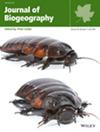Resolving the Genetic Divergence and Population Structure in the Circumpolar Ophiuroid Ophiura sarsii Complex
Abstract
Aim
The presence of cryptic species causes significant challenges to biodiversity assessment and biological resources management. Here, we investigate the genetic structure and biogeographical patterns of a complex ophiuroid species as a case study.
Location
Yellow Sea and Funka Bay in the Western Pacific Ocean, Bering Sea in the Arctic Ocean and Barents Sea in the Atlantic Ocean.
Taxon
The circumpolar ophiuroid Ophiura sarsii, a common benthic species across the Arctic seas, has at least two cryptic lineages.
Methods
To better understand the genetic structures and the underlying evolutionary processes in the O. sarsii species complex, we compared the genome-wide single nucleotide polymorphism (SNP) data and COI of five geographical populations across the northern Pacific, Arctic and Atlantic Oceans using the 2b-RAD sequencing approach.
Results
Results clearly showed three highly diverged evolutionary lineages: northern Pacific lineage (O. sarsii vadicola), Pacific-Arctic lineage (LA) and Atlantic lineage (LB). The divMigrate analysis revealed significant gene flow within O. sarsii vadicola populations and O. sarsii LA populations, but no cross-species gene flow. Demographic analysis was used to estimate their historical divergence, in which the differentiation of O. sarsii vadicola predated that of the other two lineages of O. sarsii. Molecular dating resulted in an estimation of their divergence events between 3.88 and 1.67 Ma at Pliocene–Pleistocene using COI. Functional analysis revealed several enriched signalling pathways, potentially involved in ophiuroids' environmental adaptation.
Main Conclusions
Our study suggests three lineages of the cryptic species O. sarsii could split into at least two genetic species, including O. sarsii vadicola, North Pacific–Arctic and Atlantic O. sarsii. The hidden evolutionary trajectory is uncovered for the O. sarsii complex, shaped by paleoclimate and ocean currents. We emphasise the need for genome-wide SNP applications to understand the ophiuroid biodiversity and contribute to conservation in the Pacific–Arctic region.

 求助内容:
求助内容: 应助结果提醒方式:
应助结果提醒方式:


